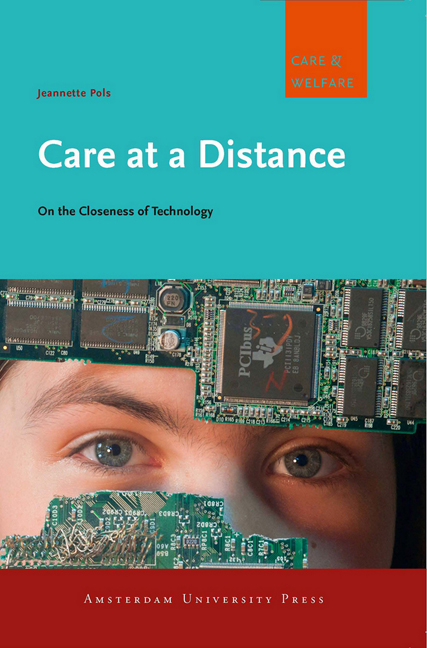Book contents
- Frontmatter
- Contents
- Nightmares, Promises and Efficiencies in care and Research
- Part I Norms and Nightmares
- Part II Knowledge and Promises
- Part III Routines and Efficiencies
- Conclusions: On Studying Innovation
- Acknowledgements
- Appendix: Projects Studied for this Book
- Notes
- References
- Index of Names
- Index of Subjects
7 - Economies of Care: New Routines, new Tasks
Published online by Cambridge University Press: 03 February 2021
- Frontmatter
- Contents
- Nightmares, Promises and Efficiencies in care and Research
- Part I Norms and Nightmares
- Part II Knowledge and Promises
- Part III Routines and Efficiencies
- Conclusions: On Studying Innovation
- Acknowledgements
- Appendix: Projects Studied for this Book
- Notes
- References
- Index of Names
- Index of Subjects
Summary
What's in a routine?
So far, this book has documented many changes associated with the introduction of telecare, including changes in ideas about good care as well as the problems to target. As discussed before, directives come with norms and knowledge. Directives give pointers on how to establish a problem and how to look after it best. For example: keep track of your weight (directive) to check if your body is retaining fluid (problem), and if this is the case, the nurse will call you (directive) to intervene quickly (value). Directives become tacit or embodied routines when people no longer consciously follow them as prescriptions but live them as a habit, in ways they usually act. Knowledge and values consolidate to form the tacit rationale for ways of doing things. They become entrenched in the activities that enact them. In the above example, patients would routinely measure their weight even though they are not thinking about the reason for doing this.
Turning activities into routines is an efficient way of realising values and fitting facts. Not every activity needs extensive research, deep reflection or thorough contemplation. A further step to achieving efficiency would be to organise routines in a way that fits with their entrenched rationale. It would mean arranging routines such that embedded goals can be reached without wasting time and energy on matters of no (or less) importance to that goal – for instance, by abolishing superfluous diagnostic tests, reducing technical disturbances in webcam connections, and so on.
In this chapter, I want to show that a change in routine – for instance, by implementing a telecare device – does not always start with reflection on what new problems these routines will address or what values they implement. Telecare practices often show that the process has gone the other way around: routines change first, and the consequences take shape afterwards. This was the case, for example, when frequent measurements shaped disease as a daily changing process that needed quick attention. What it is that new routines implement may or may not be explicit. Here I want to explore how a change of routine has implications for notions of good care and how it impacts the organisational efficiency of care practices.
- Type
- Chapter
- Information
- Care at a DistanceOn the Closeness of Technology, pp. 115 - 132Publisher: Amsterdam University PressPrint publication year: 2012



